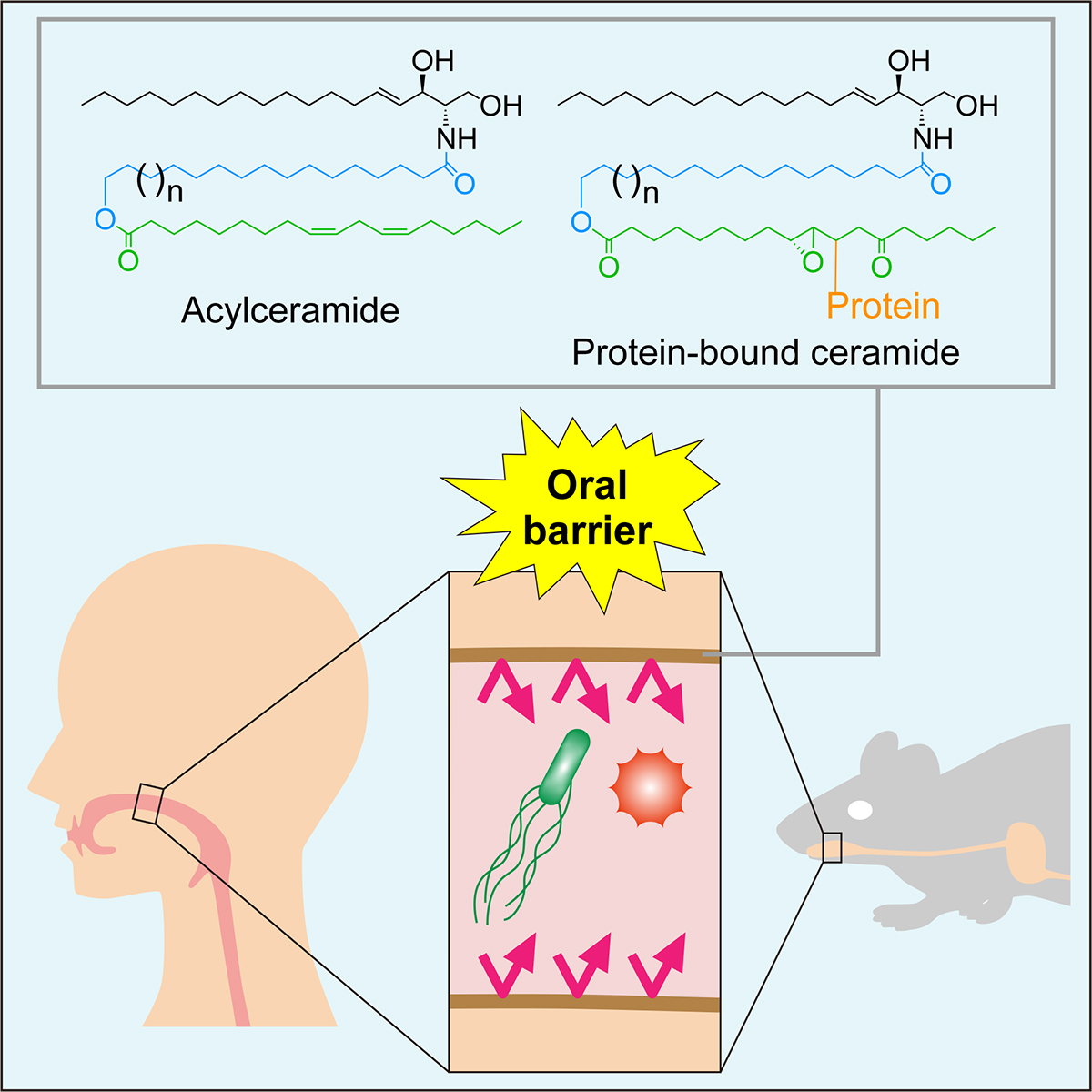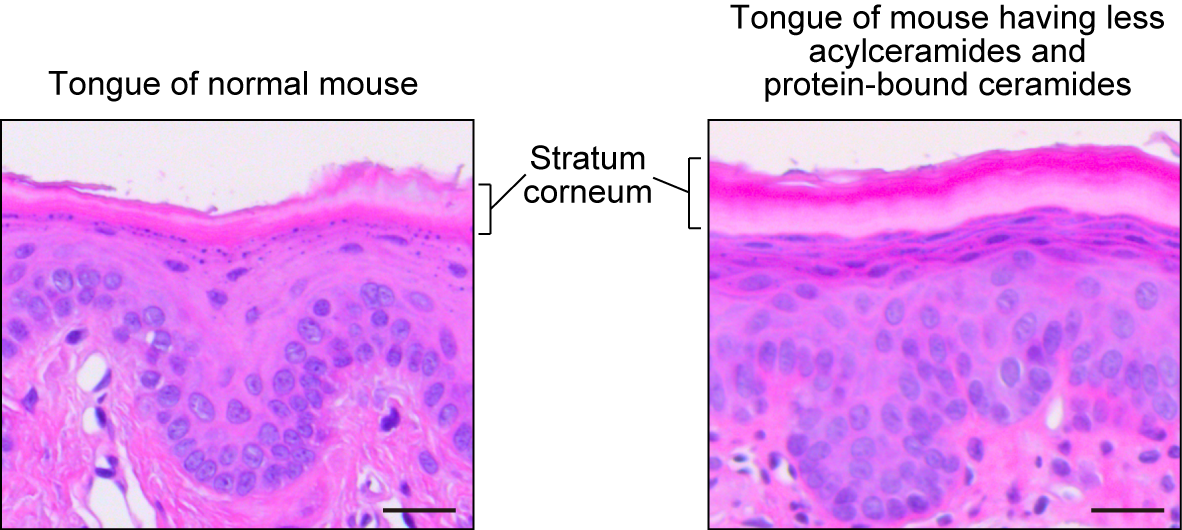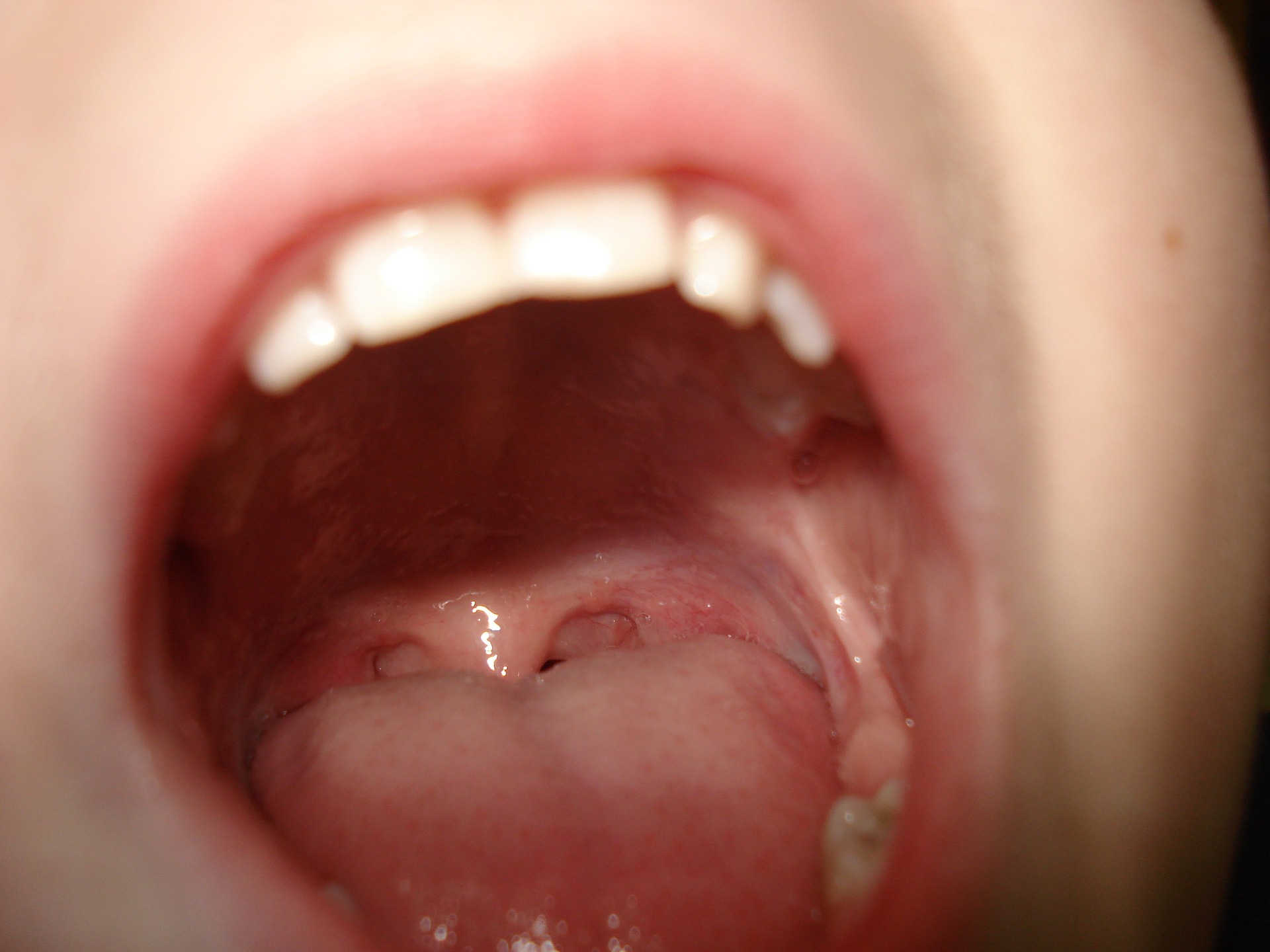Oral barrier is similar in ceramide composition to skin barrier
Research Press Release | April 13, 2023
Acylceramides and protein-bound ceramides are vital for the formation of the oral barrier in mice, similar to their role in skin, protecting from infection.
The skin is the body’s first line of defense against the environment, particularly against pathogens, chemicals, and allergens. It is now known that a class of biological molecules called acylceramides and their metabolites, protein-bound ceramides, are essential to the formation of this barrier. The outermost tissues of the mouth are closely related to the skin and have similar functions—an oral barrier. However, little is known about the role and importance of acylceramides and protein-bound ceramides in the oral barrier.
Associate Professor Takayuki Sassa and Professor Akio Kihara at the Faculty of Pharmaceutical Sciences, Hokkaido University, investigated the roles of acylceramides and protein-bound ceramides in the formation of the oral barrier in mice. Their findings, published in the journal Cell Reports, reveal that acylceramides and protein-bound ceramides are indispensable for the formation of the oral barrier.

Acylceramides and protein-bound acylceramides (top) in the oral tissues create an oral barrier that protects from pathogens and chemicals (bottom). (Takayuki Sassa, Akio Kihara. Cell Reports. April 12, 2023).
“The skin and the tissues of the mouth and throat are classified as a type of tissue called stratified squamous epithelium; acylceramides and protein-bound ceramides are present in both,” Sassa explained. “These ceramides in the skin are vital as they create the permeability barrier. Hence, we were interested in investigating if they played a similar role in the formation of the oral barrier.”
Sassa and Kihara first performed liquid chromatography-tandem mass spectrometry analyses, to fully understand the types of acrylamides and protein-bound ceramides present in the mouse oral tissues. To examine the role and importance of acylceramides and protein-bound ceramides, they generated model mice, which have reduced ability to synthesize these ceramides in the oral tissues.

Thickening of the stratum corneum in the lower side of the tongue in mice having reduced levels of acylceramides and protein-bound ceramides, reminiscent of skin barrier deficiency. Scale, 25 μm. (Takayuki Sassa, Akio Kihara. Cell Reports. April 12, 2023).
The tongues of mice having less acylceramides and protein-bound ceramides exhibited hyperkeratosis, the thickening of the outermost layer, often observed in the skin with barrier deficiency, and the mice were significantly more sensitive to capsaicin in drinking water, indicating that the oral barrier formation was affected.
In addition, using oral swabs collected from three volunteers, they also analyzed and cataloged the acylceramides and protein-bound ceramides present in the human oral tissues.
“We conclusively demonstrated that acylceramides and protein-bound ceramides were present in the oral tissues,” Kihara expounded. “This was highlighted in the model mice we developed for the study: due to the reduction in the amount of acylceramides and protein-bound ceramides, oral barrier formation was affected.”
While the findings of the study that acylceramides and protein-bound ceramides are vital for the formation of the oral barrier in mice, this must be confirmed in humans. In particular, the soft and hard tissues of the human mouth have different distributions of protein-bound ceramides, which may in turn affect the formation of the oral barrier at different locations.
Original Article:
Takayuki Sassa, Akio Kihara. Involvement of ω-O-acylceramides and protein-bound ceramides in oral permeability barrier formation. Cell Reports, April 12. 2023.
DOI: 10.1016/j.celrep.2023.112363
Funding:
This work was supported by funding from The Akiyama Life Science Foundation and the Japan Society for the Promotion of Science (JSPS) KAKENHI (JP22H02757, JP22H04986).
Contacts:
Associate Professor Takayuki Sassa
Laboratory of Biochemistry
Faculty of Pharmaceutical Sciences
Hokkaido University
Tel: +81-11-706-3917
Email: tasasa[at]pharm.hokudai.ac.jp
Professor Akio Kihara
Laboratory of Biochemistry
Faculty of Pharmaceutical Sciences
Hokkaido University
Tel: +81-11-706-3754
Email: kihara[at]pharm.hokudai.ac.jp
Sohail Keegan Pinto (International Public Relations Specialist)
Public Relations & Communications Division
Office of Public Relations and Social Collaboration
Hokkaido University
Tel: +81-11-706-2186
Email: en-press[at]general.hokudai.ac.jp
Related Press Releases:
Skin’s protective chains uncovered
Missing link in rare inherited skin disease exposed
Unraveling the mechanism of skin barrier formation

